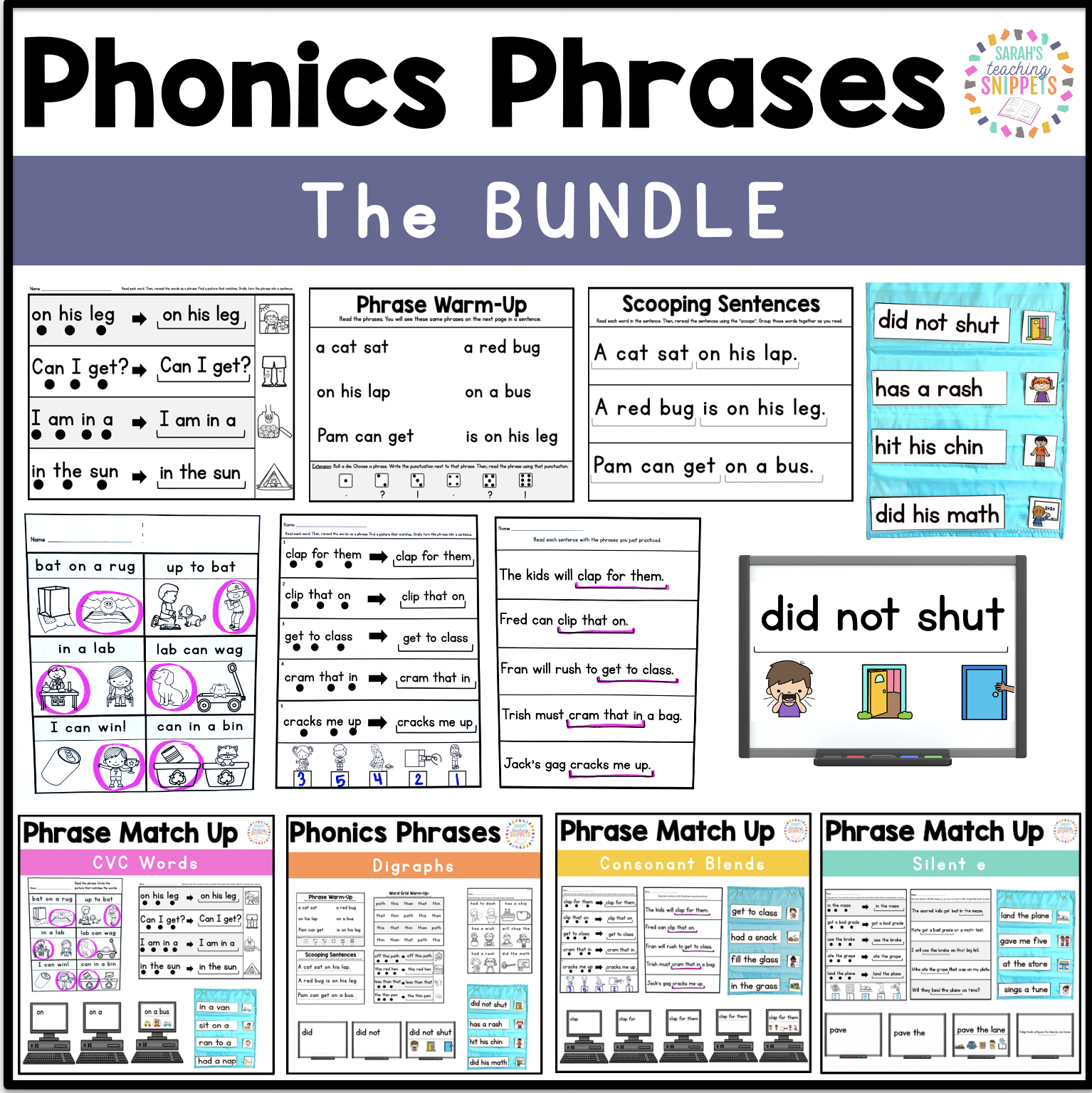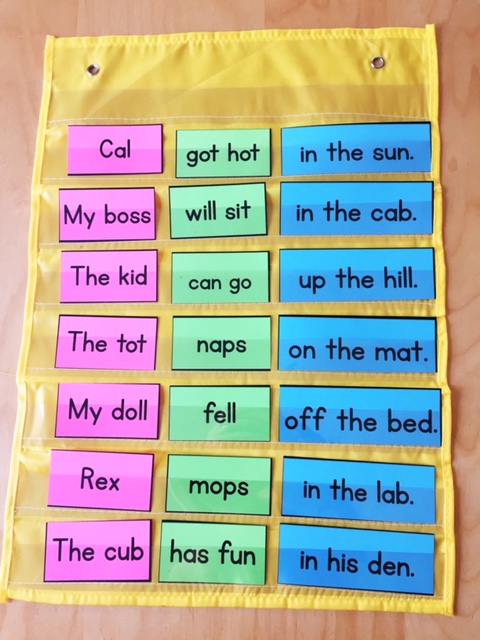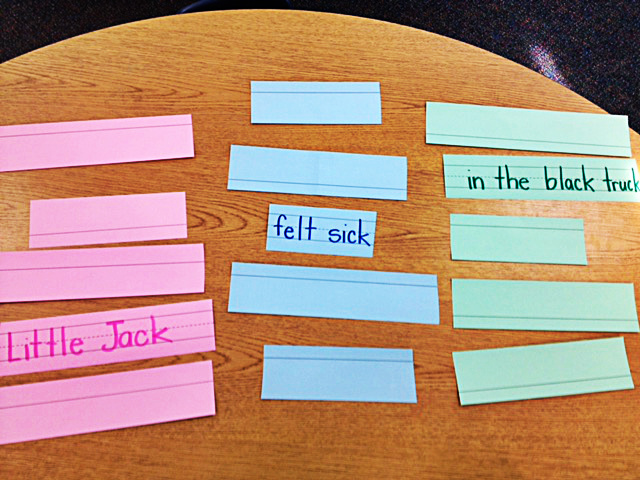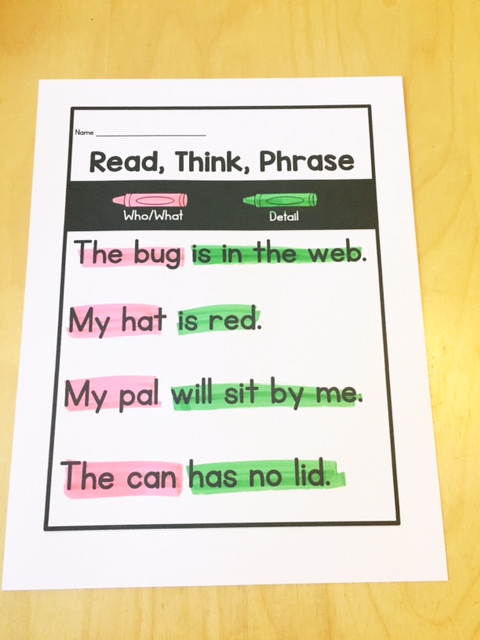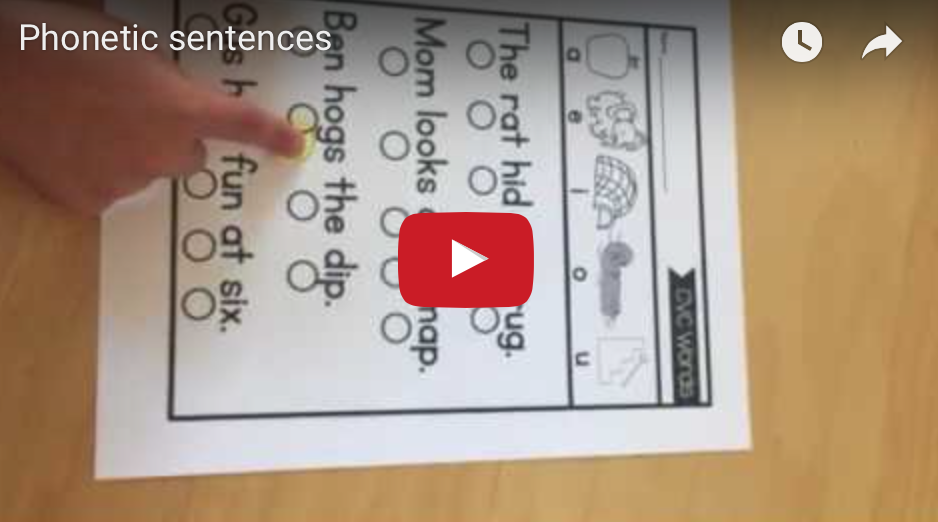When I used to think about reading fluency, I assumed it was something that third-grade teachers and beyond needed to worry about. I have since realized that fluency instruction truly begins right when we start teaching foundational skills. Reading fluency does begin with phonics! Sounds strange, right? Research shows that a strong foundation in phonics is key to reading success. But what does it have to do with fluency? Read on to find out!
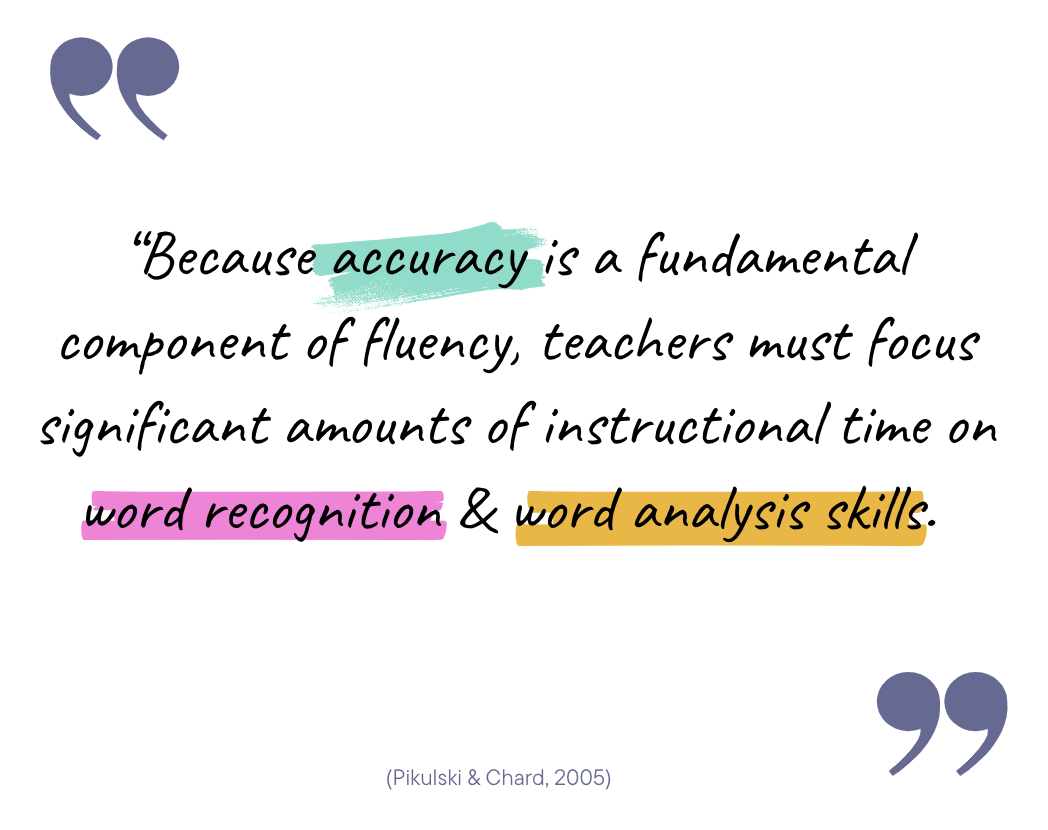
Some students do not need as much instruction and practice to gain automaticity and develop reading fluency. For many though, it does involve ample opportunities to practice under the guidance of a teacher. Before I go further, I want to clear the difference between automaticity and fluency.
- Automaticity is the ability to quickly and accurately identify words or letters. When we talk about automaticity, we are referring to how a student reads at the letter and word level.
- Fluency requires automaticity and accuracy with words but also involves prosody. When we talk about fluency, we are referring to how a student reads at the sentence and passage level. It’s not just about fast reading, though! Quite the opposite. A fluent reader not only has instant word recognition, they are also attending to punctuation, grouping words into meaningful phrases, adjusting the rise and fall of their voice, using expression, and emphasizing certain words.
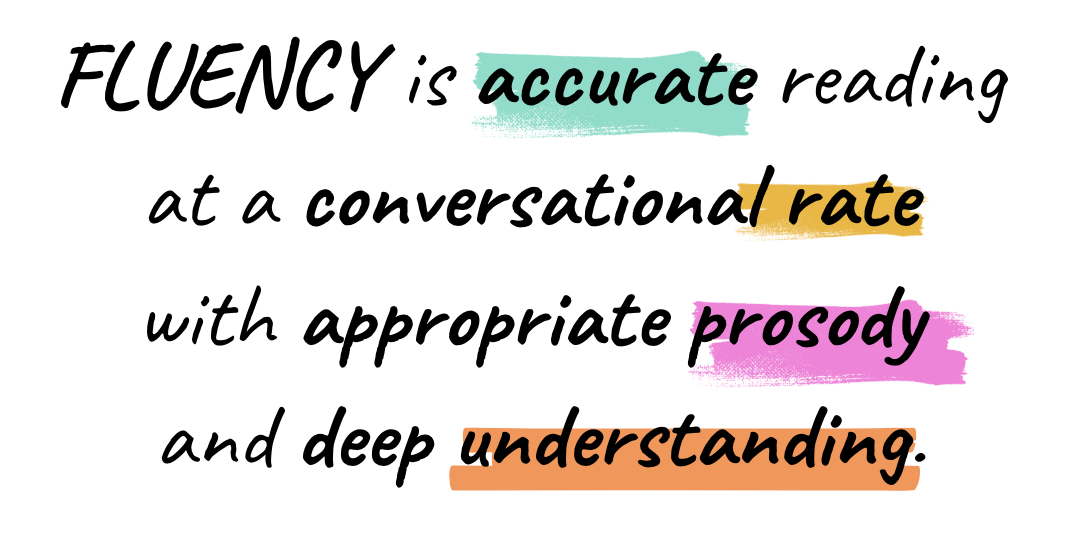
This is a combination of definitions from Hudson, Mercer, & Lane (2000, p.32) and Louise Spear-Swerling (2022, p. 96)
The components of reading fluency are:
-
Accuracy: Reading words correctly (at least 98%)
-
Automaticity: Effortless word recognition (This leads to increased rate)
-
Prosody: Reading with proper phrasing, pausing, intonation (rise and fall of pitch), tone (showing emotion), and (at times) expression.
Fluency develops in progressions.
Reading fluency is a developmental process that typically progresses through several stages as a student acquires and refines their reading skills.
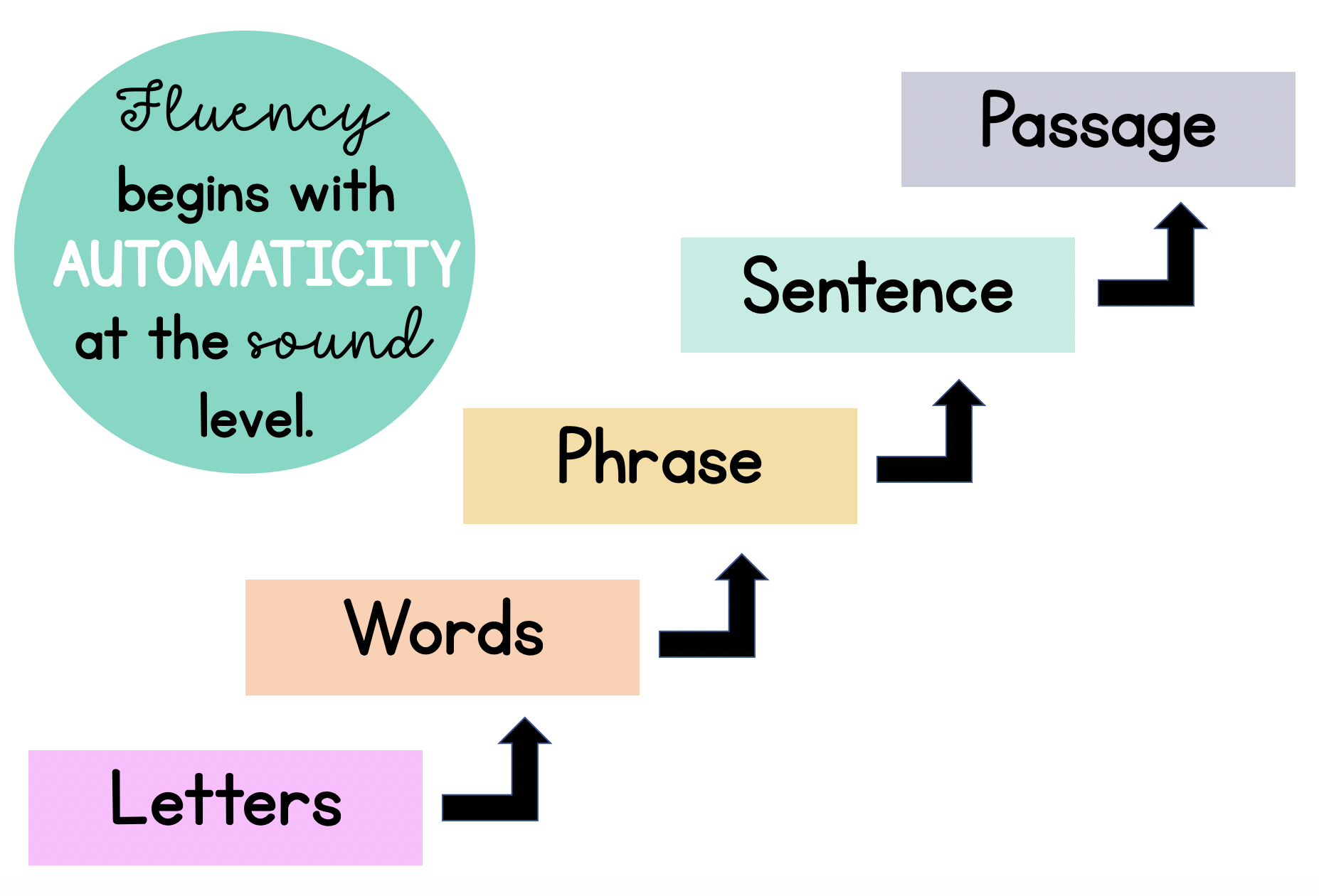
1. The Starting Point: Phonemic Awareness and Letter Recognition
The development of reading fluency begins with phonemic awareness. This pre-reading skill involves an understanding of the sounds that make up words. Children initially learn to identify and manipulate individual phonemes (the smallest units of sound in language), which prepares them for the next steps in reading development. The two most important skills are phoneme blending and phoneme segmenting. Phoneme blending is used with decoding and segmenting is used with spelling. Developing these skills primes our students for reading acquisition.
Automaticity with Letters and Sounds
It isn’t enough to just know the letters of the alphabet. Students must recognize a letter and supply its sound(s) instantly. From there, (when phonemic awareness is also strong,) they are ready to decode words. If a student is slow to retrieve a letter sound, that will make the whole process of decoding words much slower and more difficult. Explicitly teaching letters and their corresponding sounds (beginning with the most common) is the first step. Teaching it alone is not enough, though! Providing students with ample opportunities to practice seeing these letters and retrieving the sound is an essential next step.
Every day, include a quick visual drill where students see the letters they have learned, and they say the sounds and an auditory drill where they do the opposite (hear a sound and write or point to the letter).
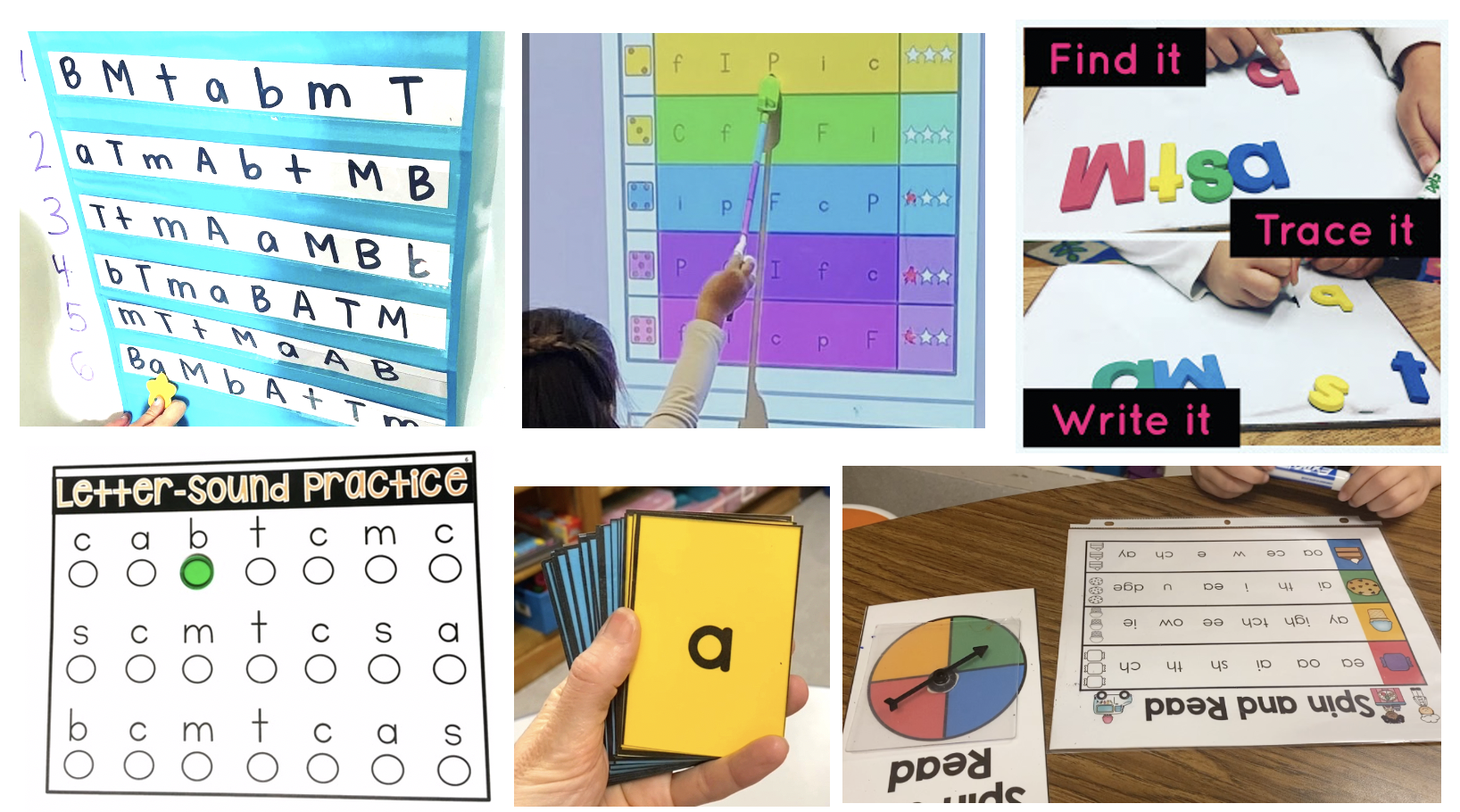
- It can be as simple as using flashcards. Include only the letters or graphemes that you have taught so far. Show the card, then students will say the sound. As you introduce new letters, you will add those to your deck. Click here for a free grapheme deck!
- You can make a grid like in the picture above (bottom left). Students will move from left to right. Point to the letter and quickly say the sound. You can do it in unison or have them whisper-read at their own pace. You can put letters in a pocket chart to use with a small group (pictured above left). You can find the Letter-Sound Practice mats here.
- You can gamify by adding a dice or a spinner. I have a game version with a dice or spinner found here. I also have a seasonal version of this game here.
- For students struggling with letter recognition, you can give each student target letters. Say a sound, have students repeat it, then find that letter, trace it, and write it. (Pictured above right)
It doesn’t stop at the alphabet, though! Once you introduce a new grapheme, like <sh> or <tch>, you will add that grapheme to your visual so that your students can become automatic with all of the graphemes you are teaching. This seems so basic and simple, but I promise it makes a big difference. It’s a small shift in mindset to go from thinking the goal is to learn the sound that a grapheme represents to the goal being that students are automatic with letter recognition.
2. Automaticity at the Word Level: Building the Bridge
The first step toward reading fluency is accurate and automatic word recognition. Word recognition is the result of phonics instruction and repetition with decoding and spelling words.
Students need explicit instruction with decoding and spelling words. I model decoding strategies and give my students plenty of opportunities to practice decoding. I also do the opposite where I show students how a word is spelled through phoneme-grapheme mapping (say the word, break it into its sound parts, then connect to the correct letters). Giving your students opportunities to spell words is equally important!

When it comes to phonics instruction, I use these letter tiles. I like that they are color-coordinated with vowels one color and consonants another. I keep two sets of these on my whiteboard at all times. I use magnetic dots on the back and leave them at the top of my whiteboard. That way, I am always ready to teach a new phonics skill! Below are pictures of how I used these (free) letter tiles over the years.
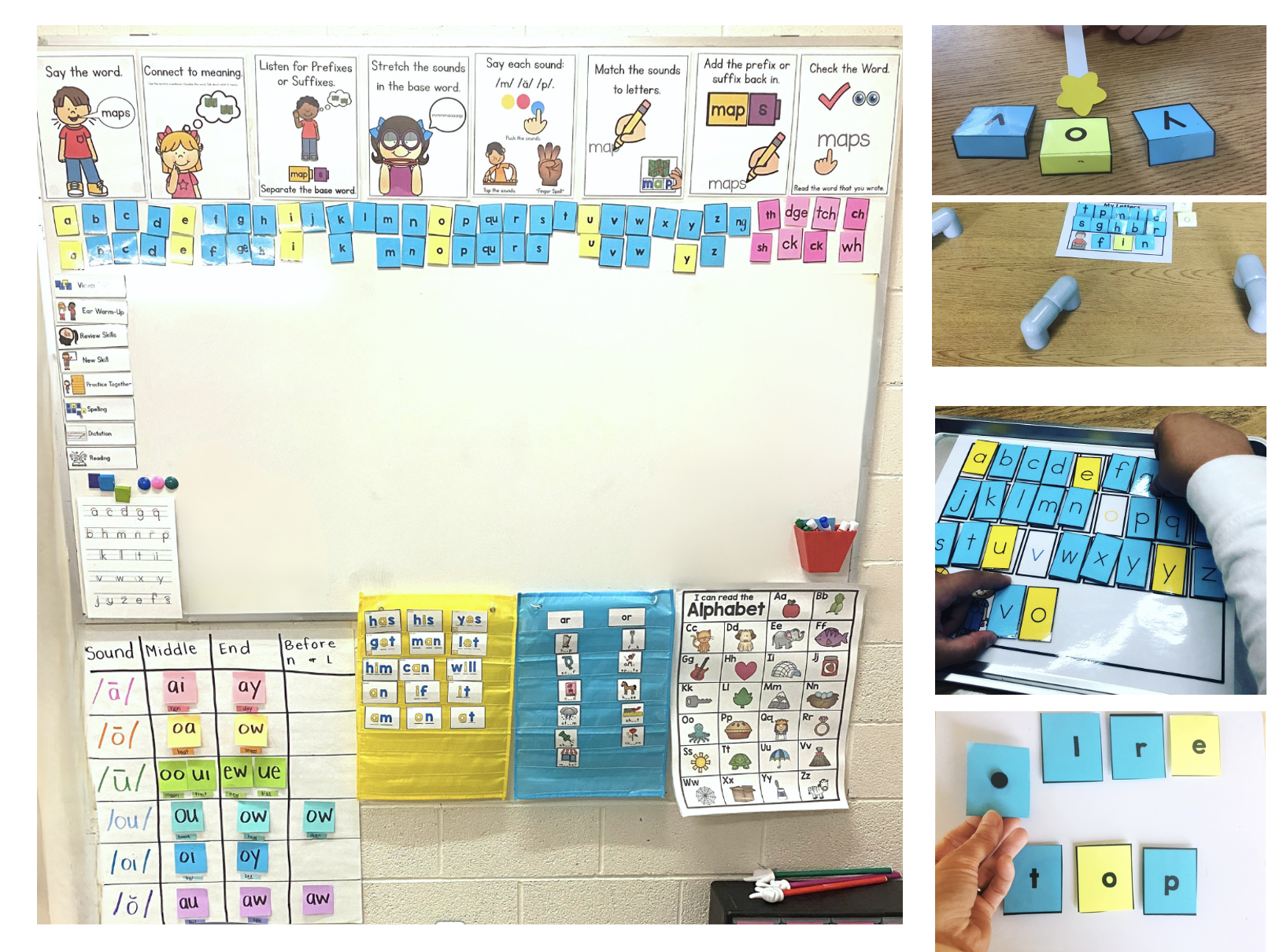
Giving your students practice with decoding:
Using word lists and decoding drills can give students the practice they need. Ideally, this would be done in a guided setting. Listen to how your students are decoding. Encourage them to stretch the sounds that can be stretched to help with blending sounds. Another essential thing to remember is to connect to meaning. After reading the words, talk about their meaning or use them in a sentence. For a word to be truly mapped in our brains, we need to connect spelling, pronunciation, and meaning.
Click here for the decoding pages shown below.
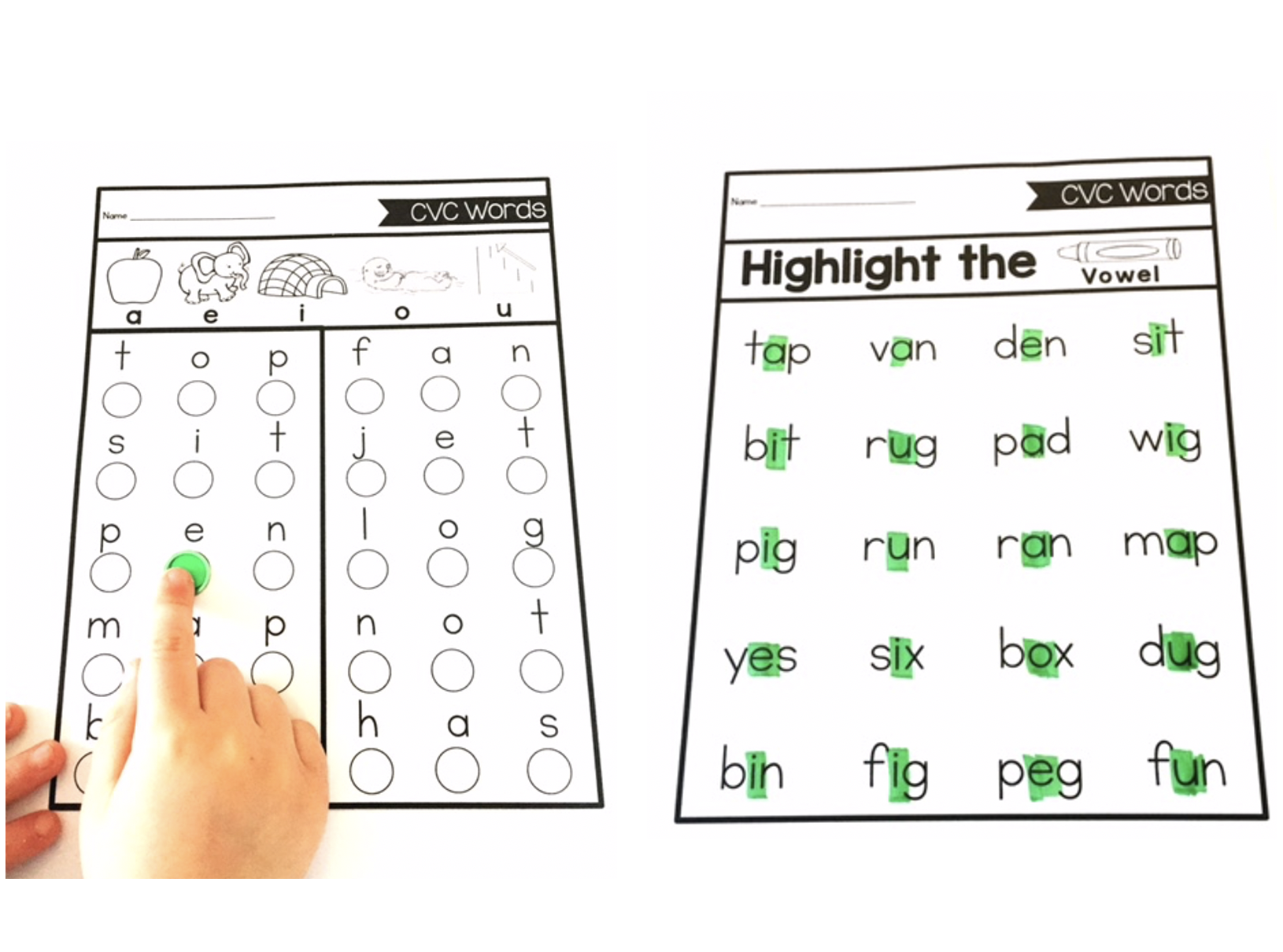
Using a Fluency Grid like the one shown below is also a great way to give students repetition with specific words. Choose five-six words to write in different order on each line. Students will read through all of the words.
Just like with letter recognition, you can gamify decoding. Kids love the Spin and Read activity! I have a resource that includes some pre-make fluency grids, the Spin and Read game, and blank templates to build your own fluency grids with different themes. Click here to find that resource.

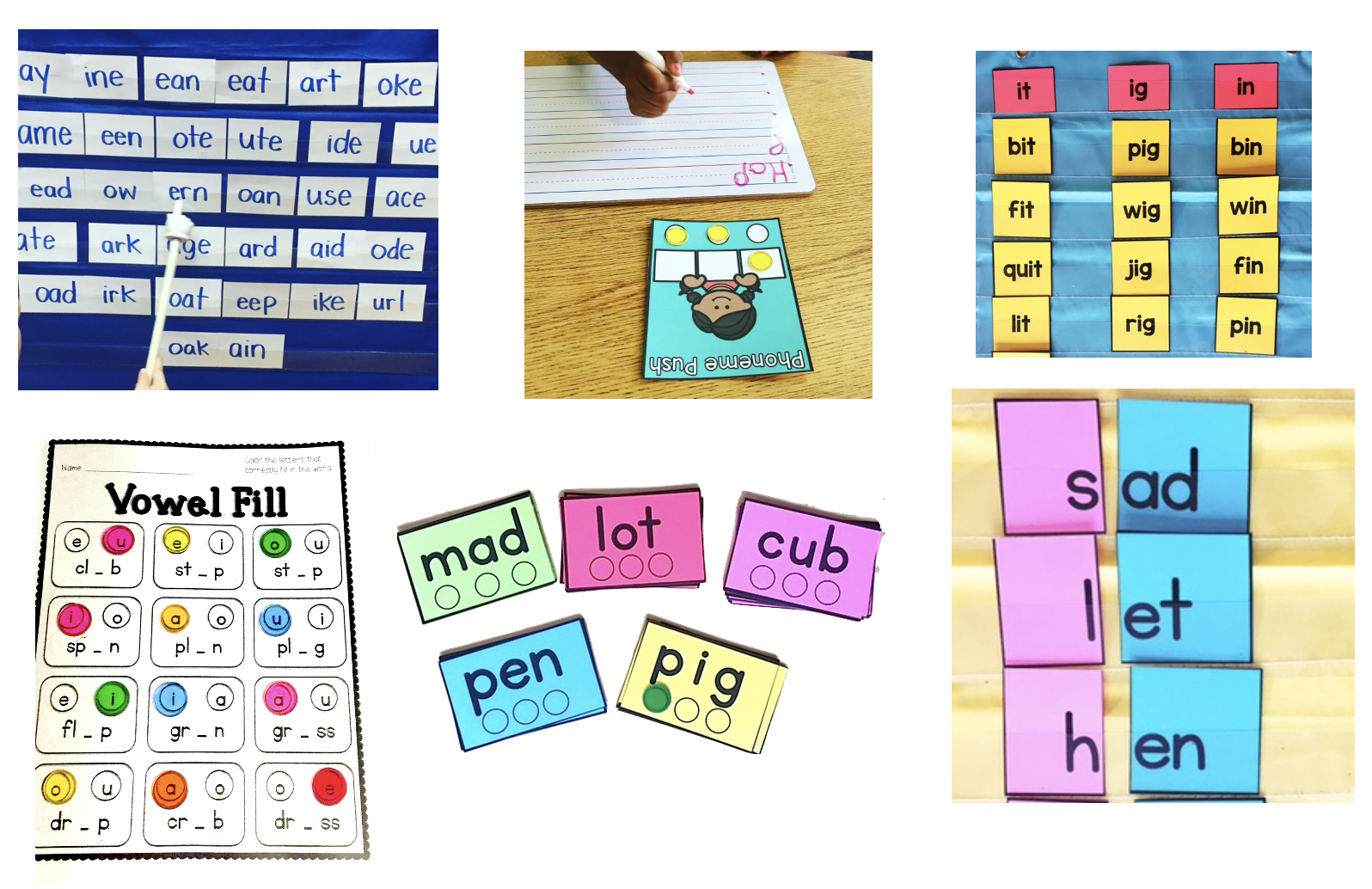
Word sorts, onset-rime match-ups, using sound boxes to encode, and vowel fill activities. The top left picture shows many of the phonics skills we had practiced at that point in the year. All I did was slowly add in word families with the phonics skills we were learning. To warm up, we would go through reading the word parts. The idea here is to make sure we give students plenty of practice decoding and spelling words using the graphemes or phonics patterns that you have taught.

3. Fluency with Phrases
Once students can decode, we want to get them reading connected text. Sometimes reading sentences can be overwhelming for students. At this phase, I recommend using phrases. Phrases are a great stepping stone to move from decoding words in isolation to words in a sentence. When working with phrases, we are helping our students increase word recognition and we are laying the groundwork for other components of fluency like intonation and, well, phrasing.
I teach my students as early as kindergarten that phrases are words that go together in a meaningful way. Each word has its own meaning or function, but when they are put together, that phrase makes it own meaning. Then, when we put phrases together within a sentence, it tells its own story (so to speak).
Here are some activities to do using phrases:
Write decodable phrases using the target skill. On the left, you’ll see consonant blends and on the right you’ll see the focus is digraphs.
- I instruct students to first decode each word. It’s important to give our students this time because accuracy is most important. We do not want to rush this process.
- Then, we reread it as a phrase. At this point, I introduce the term “scoop”. I’ll say, “Let’s read each word first.” (We will read it word by word.)
- Then I’ll say, “Now let’s scoop those words together” and we will read the words as a phrase.
- Last, we’ll orally use that phrase within a sentence to further connect to meaning.
On the second picture, you’ll see that I added punctuation. This is an added step to practice the intonation in our voice when we get to various end punctuation. I model what each punctuation would sound like.
So, as you can see, these activities are sprinkling in fluency work without sacrificing phonics practice. It’s one and the same! Click here for a video going into more detail about how to use these.
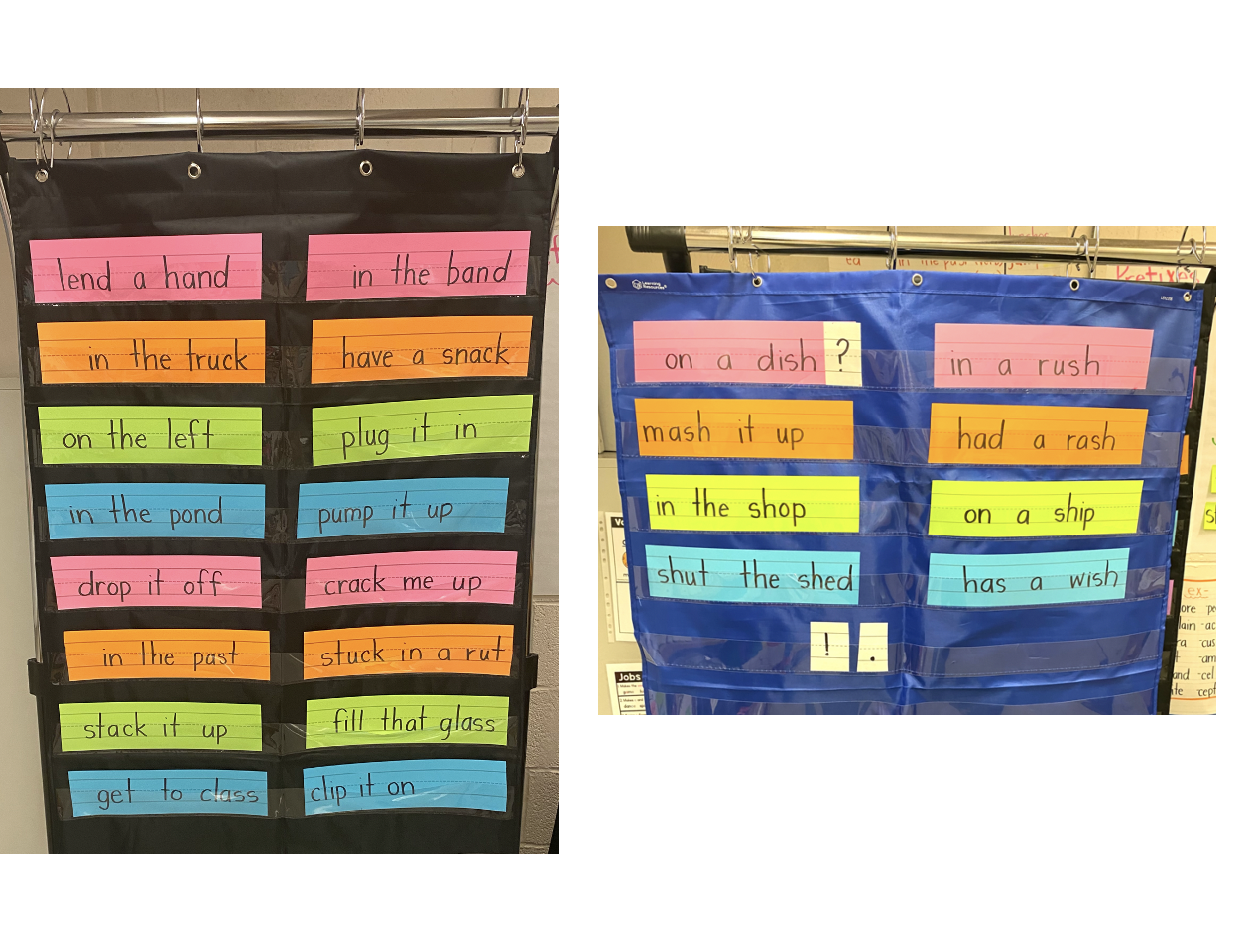
You can also build sentences by matching up phrases.
This can be a great way to provide repetition. There are different ways to use this.
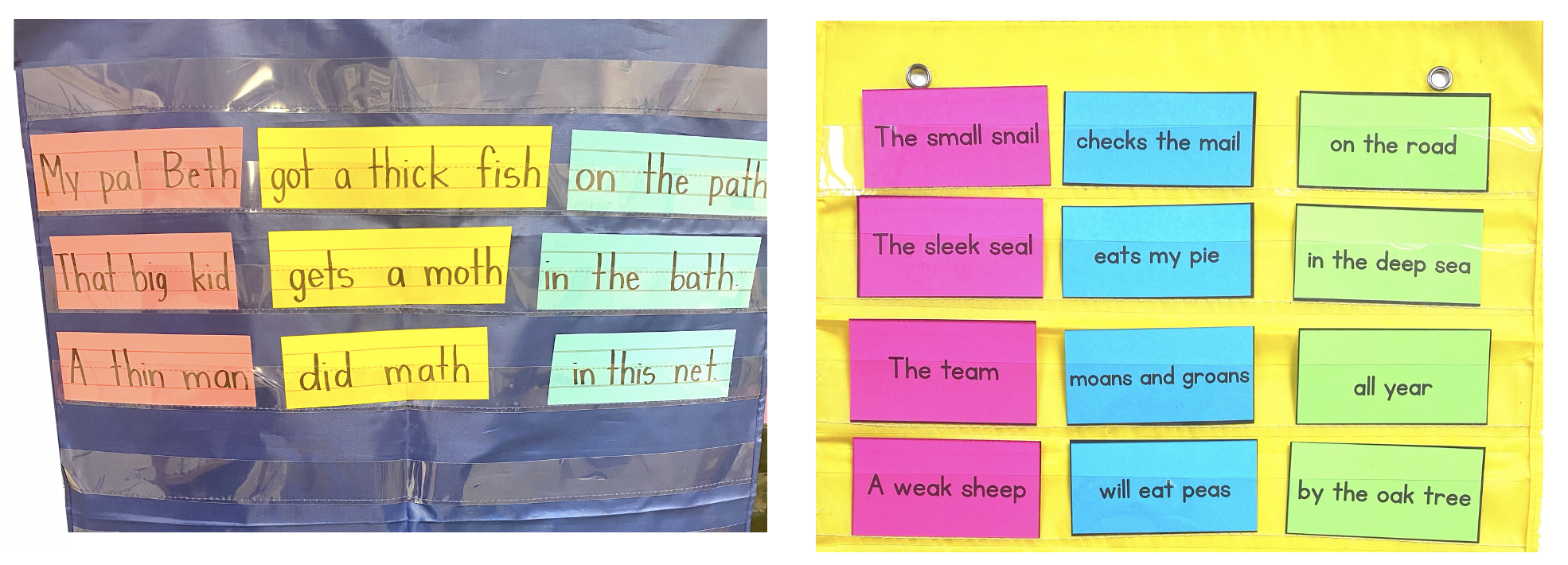
- Just reading: You can simply practice reading each phrase. Discuss what type of phrase it is. Is it a phrase with the subject of a sentence, the action, or does it provide details like where or when.
- Mix and Match Sentences: Call on students to create a sentence, choosing one from each column. Mix and match to read several sentences.
- Change one phrase at a time: Build a sentence. Then, take out one color and replace with another phrase with that same color. Read the sentence and discuss how the sentence changed. Repeat with another color. This way, you are giving your students more opportunities to reread.
You can find these pre-made Phonetic phrases here.
The picture below shows on a table because I was playing a game with them. I wanted to show you this so you could see that you can just write on the strips too. 🙂
I also have them in digital format. Project these to your class. Read the phrases and then the whole sentence. The next slide will just change one phrase.
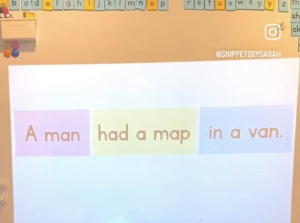
Click here to get the bundle. (From there, you can also see links to each individual set.)
Another fun activity with phrases is this Roll and Read activity.

4. Developing Reading Fluency with Decodable Sentences
Decodable Sentences: When students are comfortable with sounding out words, I move on to sentences. I start with easier, shorter sentences, like these:
You can find TONS of decodable sentences like the ones pictured above and below HERE.
Click on the picture to watch a video as an example of a student with automaticity but not fluency:
In this video, my son is reading the CVC word sentences. This is his second read. The first read involved more decoding. He is going into kindergarten in a month and has been working on sounding out words and short sentences all summer. This video is a good example of a student who is getting better with automaticity at the word level, but isn’t quite fluent yet (because he lacks the other elements of being a fluent reader.)
Using Sentence Strips: If I’m practicing with a group of students, I like to use sentence strips like the ones shown below. (You can also recreate these by writing decodable sentences on a sentence strip.) One strategy I like to use is what I call “Read and Reveal”.
- Take a colored piece of construction paper and fold it. Slip your sentence inside.
- Reveal just the first word. Have your students decode that word.
- Reveal the next word and have your students decode that word. Before revealing the next word, you will reread what you have read so far.
- Continue until all words are revealed. The key is rereading the whole sentence after decoding a new word. If its a word that didn’t need to be decoded (like “a” or “the” or “is”) then you don’t have to reread. You can just go to the next word.
- After reading, model how fluent reading sounds. Point out what your voice did as you read it (intonation changes).
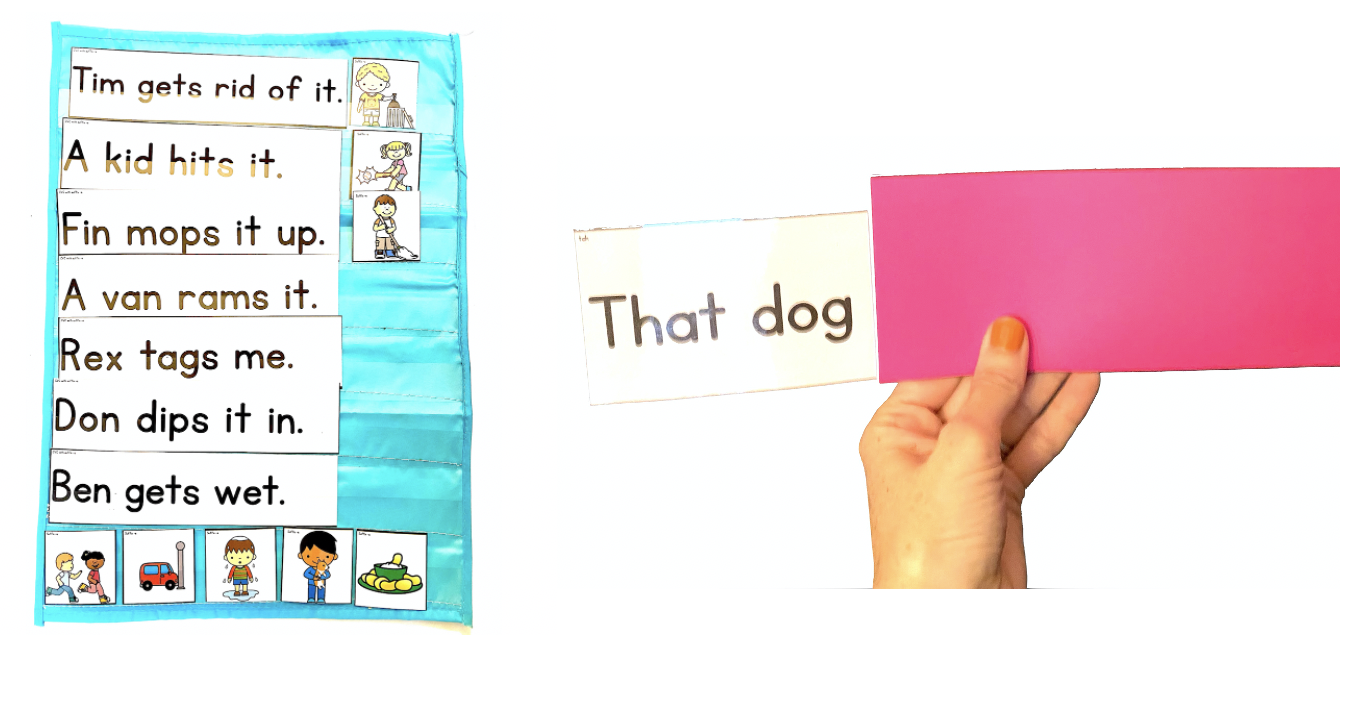
Finding Phrases: I like to incorporate this phrasing activity with my sentences.
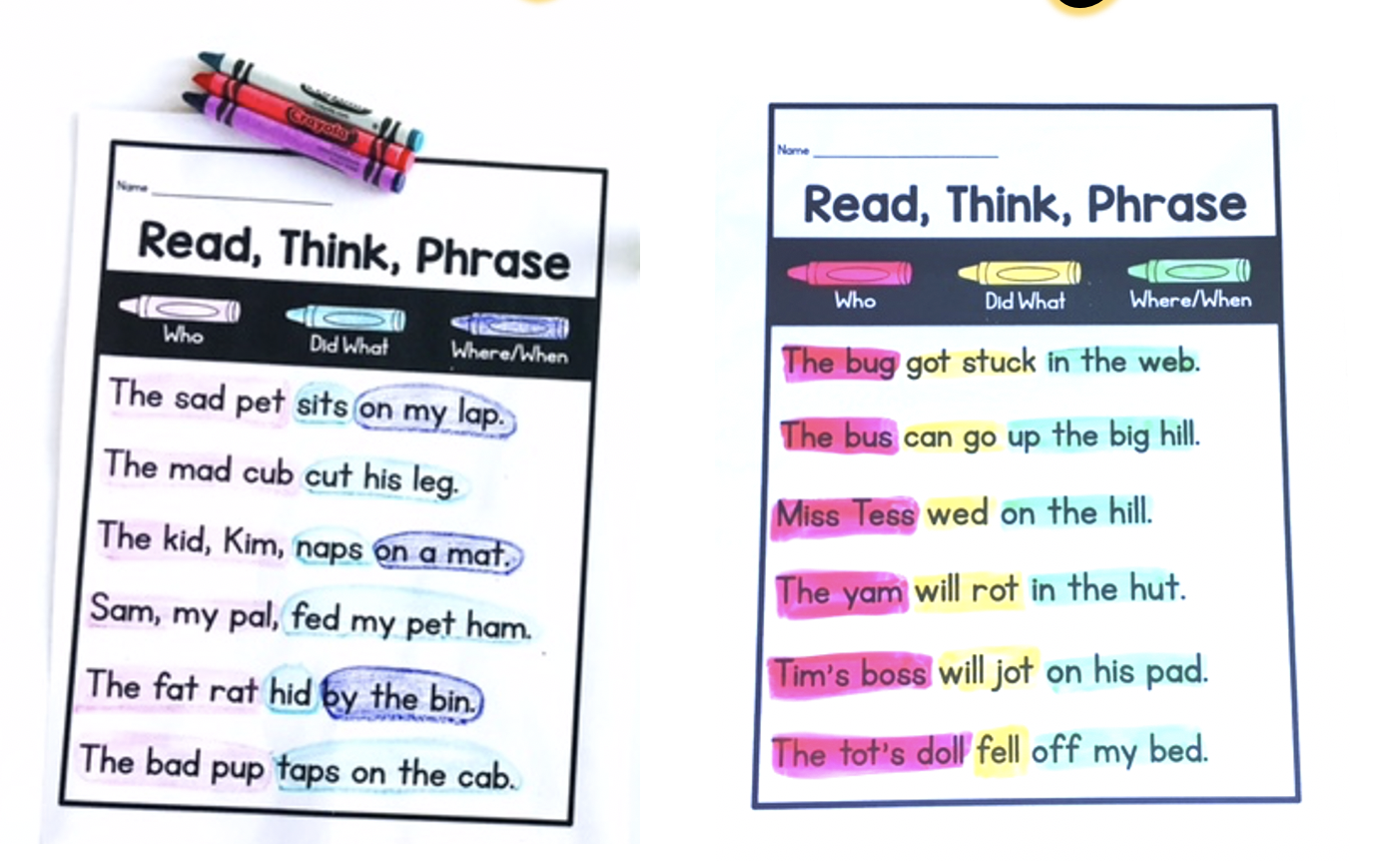
This activity helps kids chunk sentences into meaningful phrases. These are written to be obvious to introduce kids to this concept. This hopefully will help them with comprehension when they read longer sentences, too. At the very least, it does make them stop to think about the sentence and reminds them that sentences carry meaning. That is the goal of reading!
- Students will first just read the sentence, decoding the words that need to be decoded.
- Then, ask, “Which words tell who the sentence is about? This is the subject of the sentence.” Students will reread to find this, then they will underline or highlight in one color.
- Next, ask, “Which words tell what the subject is doing?” Students need to reread again, then will underline this phrase. (Provide corrective feedback as needed.)
- Last, ask, “Which words tell an additional detail like when or where?”
- After all the parts of the sentence are highlighted, have students reread it one more time, this time pausing between each color.
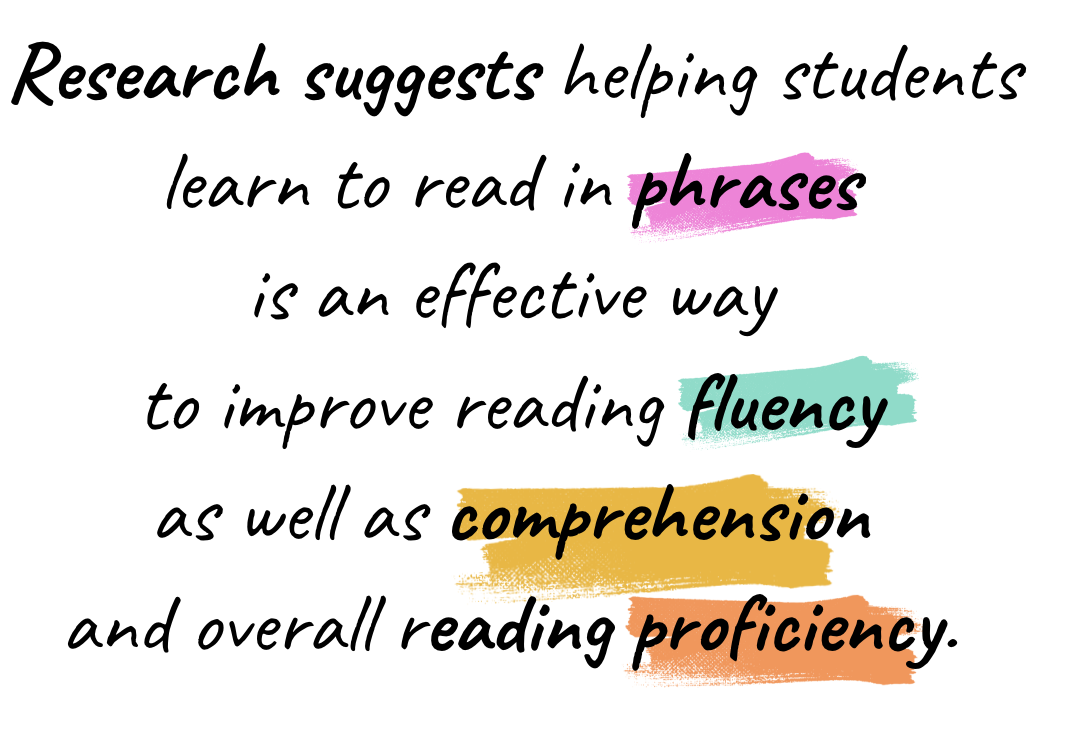
Stevens (1981) found that chunking words into thought units resulted in significantly greater comprehension scores.
“Scooping” Phrases: One of my favorite activities is scooping phrases. Being able to find meaningful phrases is a sign of comprehension. I also find that working on this skill contributes to comprehension. (Click here for a video about how to “scoop” phrases.)

- Give students a sentence. With my beginning readers, I use a decodable sentence using words that have the sounds we are working on.
- Model how you would “scoop” the sentence into meaningful phrases.
- After several examples, have your students try to make scoops.
- Next, your student will reread the sentence, pausing between scoops.
- You may need to model how this sounds.
Sentence Scramblers: Another good activity that requires students to think about meaning is a decodable sentence scrambler. Students not only end up reading and rereading each word over and over, but they are also thinking about how to create a sentence that makes sense and sounds right grammatically.
You can find decodable sentence scramblers here but you can also make your own using note cards!

Sentence Pyramids can also be an effective way for students to increase their rate while reading. This allows them to read the words multiple times, hopefully leading to more word recognition.

Spin a Sentence (Matching Subject and Predicate): The activity below is something I’ve blogged about before. I love doing this activity with my students. It shakes it up a bit so they are not just reading sentences on a page. This can be a center or a small group activity. You can read more about it HERE and can find it in my store HERE.
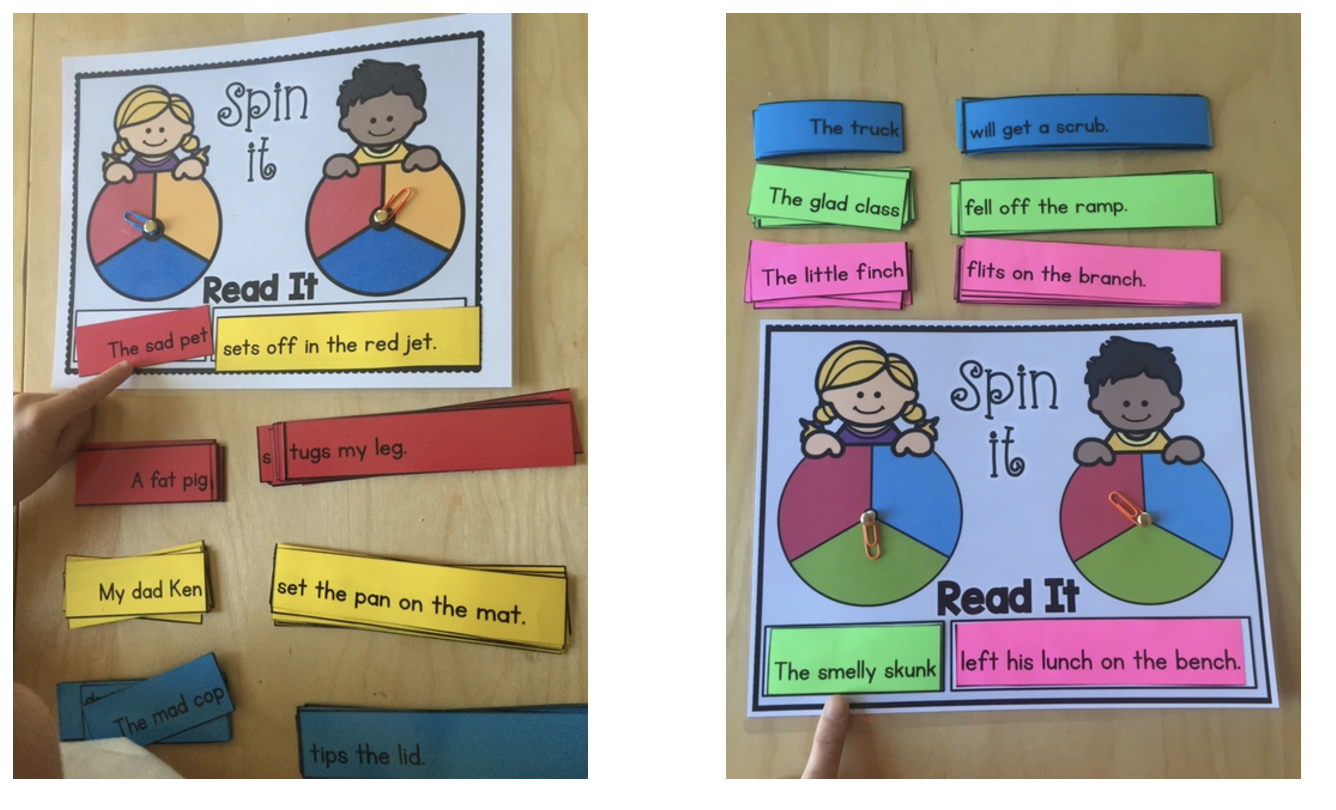
5. Developing Reading Fluency with Decodable Passages and Books
Finally, once students can read sentences with some fluency, you can start to introduce short stories. There are so many great decodable books out there to try! Decodables are essential for our emergent readers. We want to give them plenty of opportunities to apply what they are learning during phonics instruction. For example, if you are teaching silent e then your students need to practice reading connected texts with silent e words and any words that use graphemes and patterns you have already taught.
Make sure students get more than one opportunity to read these texts. You can also choral read (read all together) and let students partner read. If you choose a slightly more difficult text, you can do echo reading, where the teacher reads a few sentences then students read those same sentences.
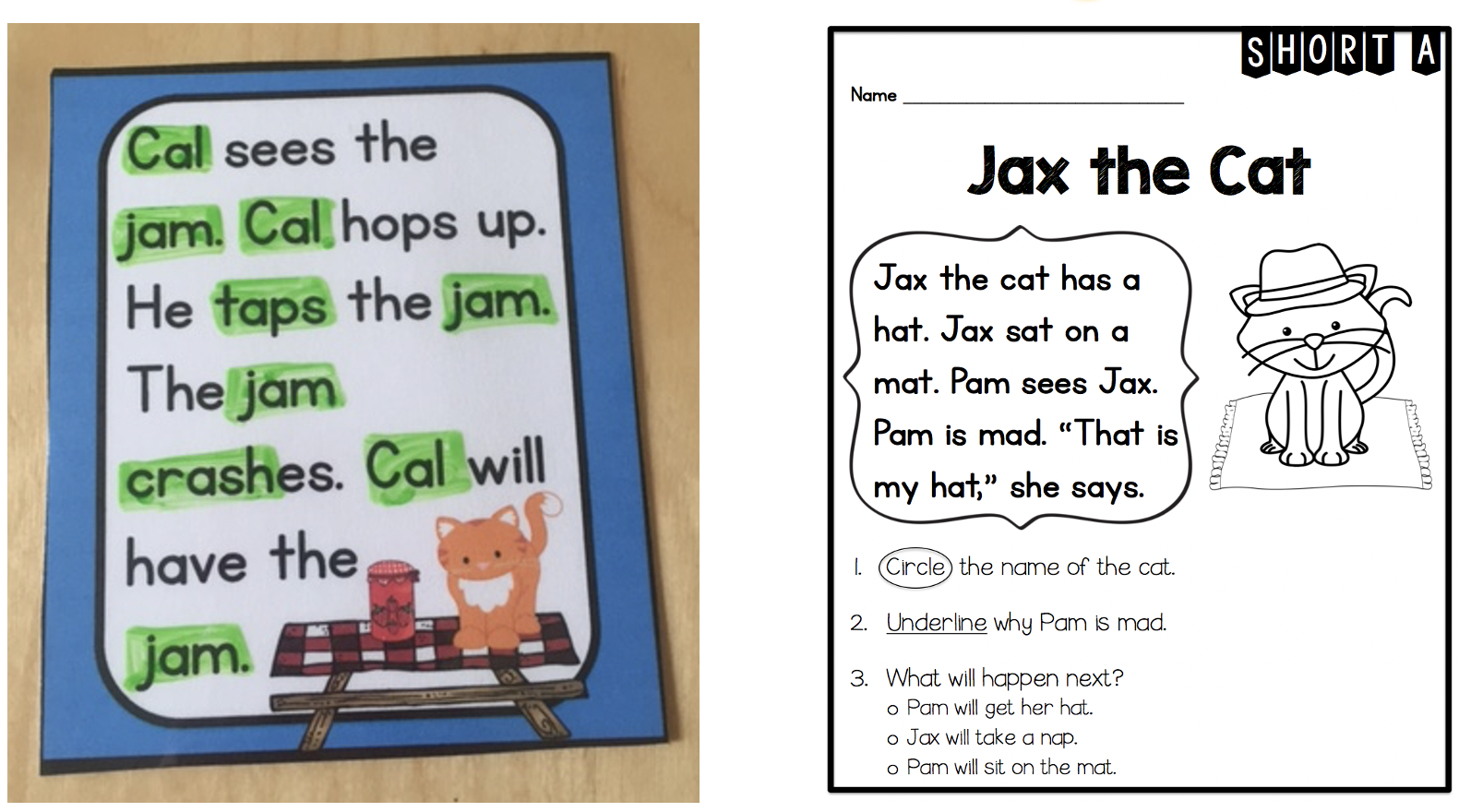
Developing Prosody
Prosody includes reading with proper phrasing, pausing, intonation (rise and fall of pitch), tone (showing emotion), and (at times) expression. This is an advanced skill. For some, it seems to come relatively naturally. For others, it can really be a challenge. In the early grades, students are usually not able to read with perfect prosody. That usually comes later, usually by third grade (but often sooner).
However, we do not need to wait to teach the elements of prosody! I already talked about phrasing earlier, when I showed the scooping activity. This is a great way to transition kids from reading word-for-word to reading in meaningful phrases.
We can also make sure we are pointing out punctuation in these early texts. Even the most basic decodables have commas, quotation marks, question marks and exclamation marks. Model how your voice rises and falls based on puntuation or how you may adjust your voice when you go from narrator to character.
One of my favorite ways to practice reading with expression is to emphasize certain words. This idea came from Timothy Rasinski and Melissa Cheesman Smith’s book, The Megabook of Fluency. (Update: Here is an Amazon Affiliate link to their latest version of this book.) I highly recommend it!
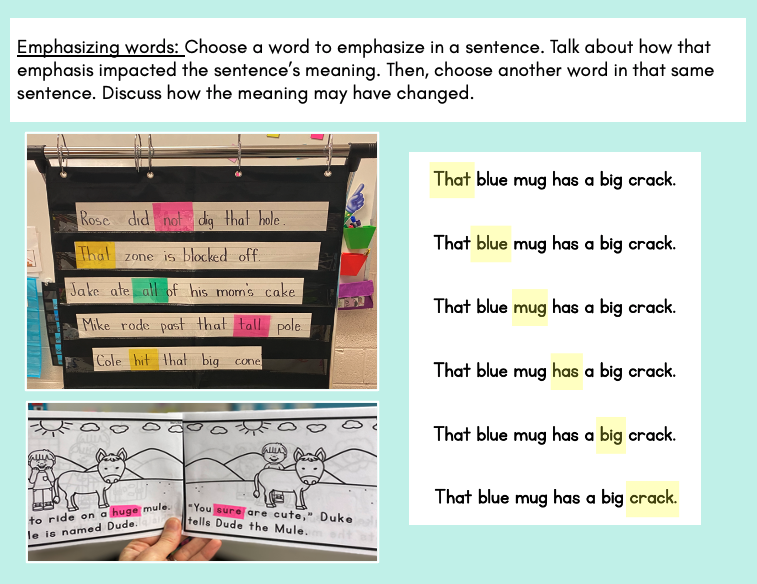
Four Square Fluency
Fluent reading is so much more than speed! While rate is a common way we measure it, fluency is really about accuracy, automaticity (instant word recognition), and prosody (reading with proper phrasing, pausing, intonation, tone, and, at times, expression).
That’s why I use this (free) Four Square Fluency visual—it keeps me focused on what really builds fluency. These are things kids can actively work on and take ownership of.
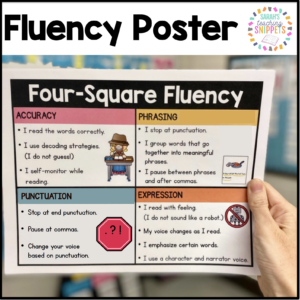
I spend time explicitly teaching and modeling these aspects of fluent reading, giving students opportunities to practice them in a guided setting with feedback. I often focus on one square at a time. For example, I might say, “Let’s focus on accuracy during your first “whisper read.” We want to take our time and make sure we’re reading the words correctly.” Then, on the second read, I may choose another area to target—or let them decide. I like to set a timer so they can practice with a specific goal in mind, and then we regroup or partner up to practice aloud.
The Keys to Reading Fluency Instruction:
Whatever you are choosing to use for fluency instruction, remember these three things.
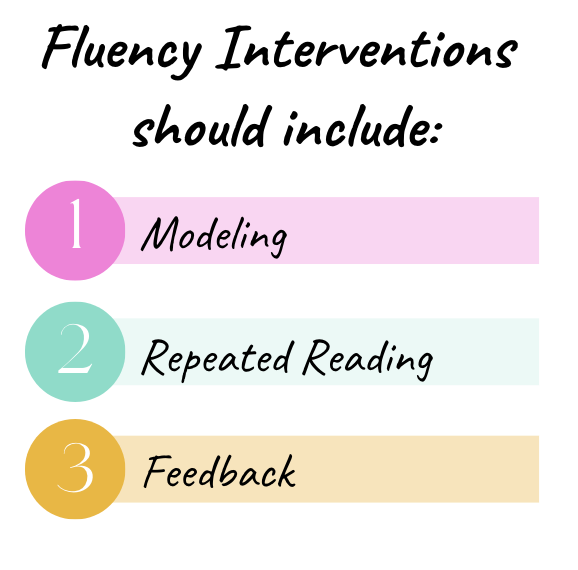
Modeling: Read-Alouds
Although students at this phase are practicing with decodable texts, you can still expose them to great literature through read-alouds. This way, they continue developing vocabulary, comprehension, and a love of books. You are also modeling fluent reading with appropriate pausing, intonation, and expression. It’s so important that students are getting both!
I hope this post was helpful!
